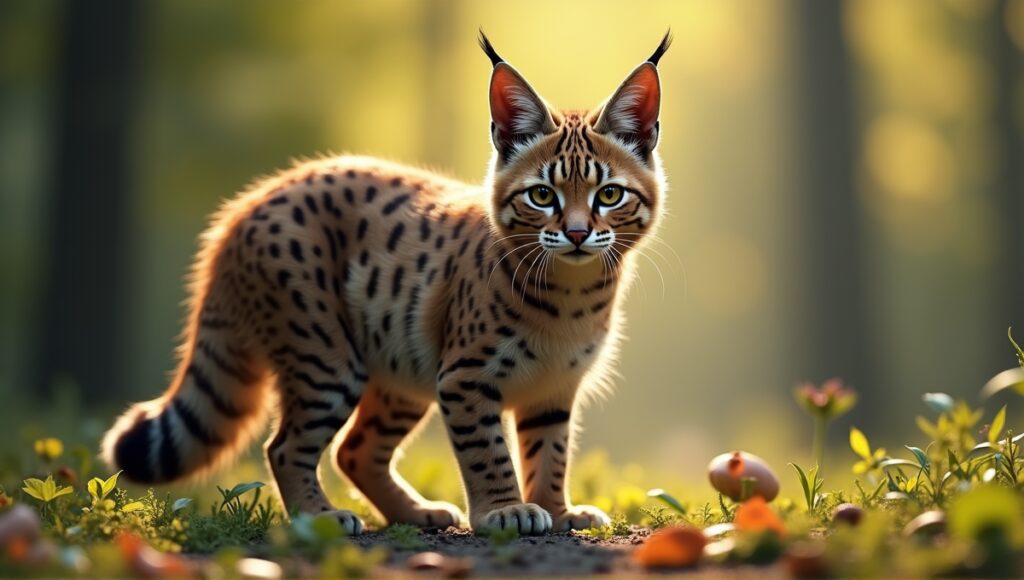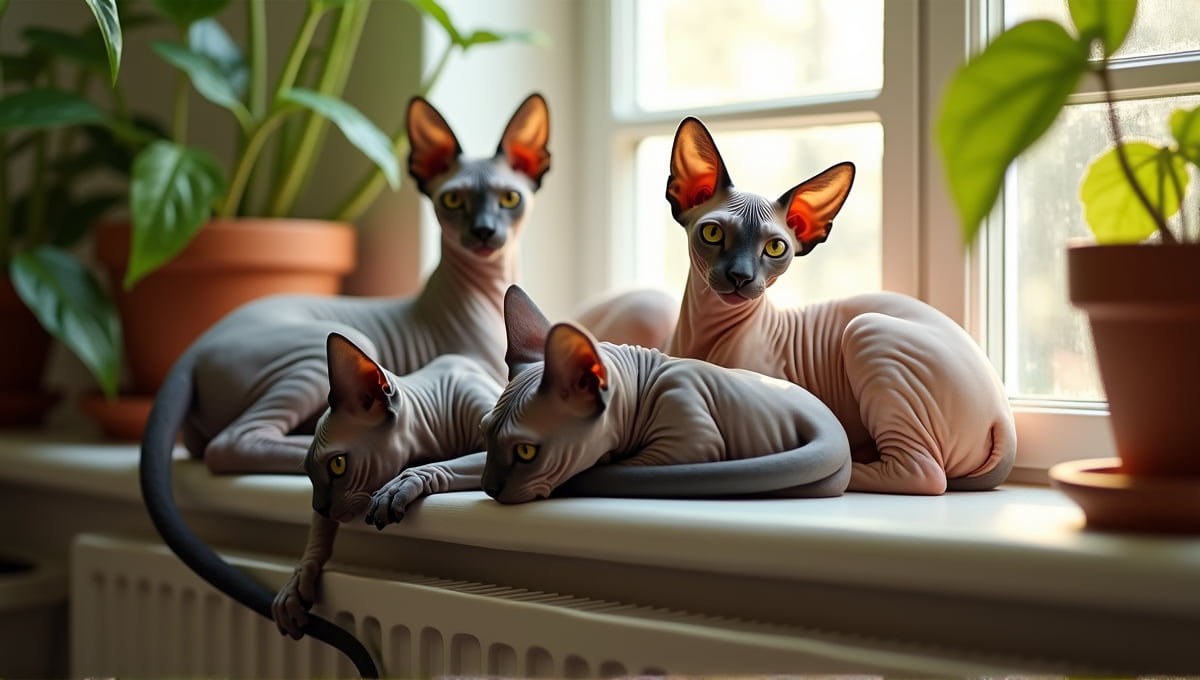Bobcat hybrids as pets? This is a topic I’ve researched extensively for years as these cats are fascinating hybrids of wild and domestic, so it raises both legal and ethical questions. You might be wondering if they’re legal in your area.
It’s not a straightforward answer, as laws vary significantly and understanding them can be complicated. So, let’s dive into the truth about these interesting cats and their legal status.
Exploring Wildcats with Mixed Ancestry

Bobcat hybrids are fascinating animals, as they are created by breeding domestic cats with wild bobcats. I’ve dedicated years to studying these fascinating animals, and I’m particularly intrigued by their origin story. The most famous bobcat hybrid is the Pixie-bob, and I love researching these particular cats, as they display a combination of domestic and wild traits.
When discussing bobcat hybrids, we’re really examining a mix of genetic material. As a first-generation hybrid (F1), the bobcat hybrid is usually 50% bobcat and 50% domestic cat, resulting in a cat with wild instincts and domestic cat behaviors. This blend is endlessly fascinating to me as a cat lover.
Their genetic composition may vary, as some will have slightly more bobcat DNA than others. Consequently, each cat will look and behave slightly differently. As someone passionate about all things cats, I’ve enjoyed observing these slight genetic variances in individual cats.
Bobcat hybrids aren’t your typical house cats, as they have the genetics of their wild ancestors. Consequently, their wild ancestry is often evident in their behavior and physical appearance. This is what makes them so different from any other domestic cat. If you’re interested in learning more about other exotic cat breeds, there are many fascinating options to explore.
Traits of Cross-Bred Wildcats

Bobcat hybrids are larger than the average cat, weighing anywhere from 10 to 30 pounds. Males are larger than females, and I’ve seen some really impressive specimens during my time working with these cats.
Their coats are beautiful with spotted or marbled patterns and colors that vary from tawny browns to greys and blacks. Some even have the wild bobcat’s ear tufts. And it’s these wild characteristics that really resonate with people.
The appearance of a bobcat hybrid is unique. They have wide-set eyes and a strong chin, and their facial features often resemble those of their wild bobcat ancestors. This distinctiveness is one of the reasons why so many people find them so appealing.
One interesting characteristic of some bobcat hybrids is that they are polydactyl. This means they have extra toes. In the Pixie-bob breed standard, cats are allowed to have up to seven toes on each foot, and I’ve certainly seen some impressive “big foot” cats in my time!
All of these physical characteristics make the bobcat hybrid unique. This isn’t your average cat you can just cuddle with. And their wild appearance prompts a lot of questions and awe. So it’s easy to understand why some people are so drawn to these cats. For those interested in other unique felines, bengal cat characteristics are also quite fascinating.
Behavioral Traits of Bobcat Hybrids

Bobcat hybrids are a mix of wild and domestic, and this comes through in their behavior. I’ve had the opportunity to spend a lot of time with these cats, and you can often see their wild instincts at play. They’re also a bit more independent than the average house cat.
Many bobcat hybrids also retain strong hunting instincts. If given the opportunity, they might stalk toys or even small animals. However, they can also form strong attachments to their human family. It’s an interesting mix of wild and domestic behavior.
Bobcat hybrids also tend to have high energy levels. They require a lot of exercise and mental stimulation. I’ve watched these cats climb very tall cat trees and jump impressive distances. Their activity levels closely resemble that of their wild ancestors.
Bobcat hybrids may also have unique vocalization. They don’t meow like a traditional house cat. Instead, they might chirp or trill. This is their way of communicating with their human family.
These behavioral characteristics make bobcat hybrids an interesting pet. They’re not the right fit for everyone, but for those who are able to provide for their needs, they can be a very fulfilling pet. Their wild behavior sets them apart from any other domestic cat. If you’re considering other exotic cat breeds, it’s important to research their specific behavioral traits as well.
Legality and Regulations of Bobcat Hybrid Ownership

Owning a bobcat hybrid is not simple. The U.S. does not have federal laws specifically governing bobcat hybrids, but state laws do. Therefore, you need to check your state laws before considering a bobcat hybrid as a pet.
Some states have strict laws regarding hybrid cats. Here’s a brief overview:
- California: Illegal without a permit
- Georgia: Requires a wild animal permit
- New York: Not allowed as pets
- Texas: Legal with proper documentation
Each state may have different laws, so always check your specific laws. Additionally, some areas may require special permits for exotic pets, which can be expensive and challenging to obtain.
Punishments for owning a bobcat hybrid in a state where it’s illegal are serious. In some states, you could face up to a $1,000 fine and 90 days in jail. It’s not worth the risk, so be sure you’re obtaining one legally. Also, keep in mind laws change, and what’s legal one day may not be legal the next. So always stay up to date on your laws if you plan to own a bobcat hybrid as a pet. Similar considerations apply to other domestic cat hybrids, so it’s important to research thoroughly before adopting any hybrid breed.
Care Requirements for Bobcat Hybrids
Caring for a bobcat hybrid is challenging. Their diet is more particular. They often eat a combination of high-quality cat food and raw meat. Ensuring they receive the proper nutrients is something I’ve found to be critical to their overall health and happiness.
These cats need space. They won’t do well in a small apartment. They thrive when they have plenty of space to run, climb, and play. Outdoor enclosures are excellent if designed safely. If you can’t let them roam outside, you need to at least provide them with a multi-level indoor enclosure to climb and perch.
Grooming a bobcat hybrid is similar to grooming any other type of cat. Regular brushing is helpful to control shedding. Their lineage may allow them to be decent at self-grooming, but they still require regular check-ups and basic vaccinations.
These cats are active, so environmental enrichment is crucial. Toys that allow them to mimic hunting are one option. Another is puzzle feeders to help keep their minds active. I’ve found providing proper environmental enrichment to be important to prevent these highly intelligent cats from getting bored. If you’re looking for a less demanding pet, you might want to consider low-maintenance cat breeds instead.
Health Concerns and Lifespan of Bobcat Hybrids

Bobcat hybrids are unique and can have unique health issues due to their mixed genetics. I always caution potential owners to be aware of potential health issues.
It’s important to find a good vet who has experience with hybrid cats, as not all vets will have experience treating them. Regular checkups are key to catching any health issues early.
On the plus side, bobcat hybrids tend to have excellent longevity. They can live anywhere from 12 to 20 years if properly cared for. I’ve even met some that were older. It’s a significant long-term commitment to own a bobcat hybrid.
Common health problems include dental issues and hip dysplasia. Some may also be prone to heart problems. Regular vet check-ups and a healthy lifestyle can help prevent many of these issues. If you’re interested in the lifespan of other unique breeds, you might want to check out information on hairless cat lifespan.
Contrasting Lynx Rufus Crosses with Alternative Feline Mixes

Bobcat hybrids exhibit many of the same traits as other wild cat hybrids (Bengals and Savannahs) because they have a wild lineage. However, they also have their own unique qualities.
These cats often have more of a ‘bobbed’ appearance in their tails compared to other hybrids, and their coat patterns are often different as well. While Bengals have rosettes, bobcat hybrids typically have a less defined spotted or marbled pattern.
In the world of cats, bobcat hybrids have become more established. The Pixie-bob breed was established by The International Cat Association (TICA) in 1994. This recognition has helped make the breed more popular among cat lovers.
Bobcat hybrids are often more laid back than some other hybrids. For example, the Pixie-bob isn’t as high energy as a Savannah. However, it still requires more care and attention than your average domestic cat. For those interested in other unique breeds, you might want to explore rare cat breeds as well.
Ethical Considerations of Breeding Bobcat Hybrids

Breeding bobcat hybrids is controversial for a few reasons. There’s concern about the potential impact on wild bobcat populations. A 2004 study by Schwartz et al. found that approximately 3% of wild lynx in Minnesota carried bobcat genes. While this figure may seem low, if more people start breeding bobcat hybrids, this genetic mixing could become a serious concern. It’s a valid argument against breeding bobcat hybrids, and one that should not be ignored.
There’s also concern about the welfare of the animals. When breeders cross wild cats with domestic cats, the offspring sometimes suffer from health issues. I have seen firsthand in animal shelters the consequences of crossing wild and domestic cats.
There’s also a conservation argument. Some people claim that if we allow bobcat hybrids to be kept as pets, it will decrease demand for exotic pets and help save wild cats. Others argue the opposite, that it will increase demand for wild cats. It’s a tricky topic as both sides make valid points. These ethical considerations are similar to those surrounding other exotic cat breeds.
Expert Opinions on Keeping Bobcat Hybrids as Pets

Opinions among veterinarians are mixed regarding bobcat hybrids. Some commend them for their excellent health while others raise concerns about genetic problems. However, one challenge I’ve encountered is finding a vet willing to work with bobcat hybrids.
Behavior experts frequently discuss the specific care requirements of bobcat hybrids. They stress the importance of recognizing their wild instincts, as these animals won’t necessarily act like traditional domestic cats. Thus, owners should be prepared for a different set of quirks.
Conservation experts almost always address the issue of hybrid breeding in discussions about bobcat hybrids. Many argue that breeding hybrids ultimately harms wild populations, and others suggest that funds would be better directed to conserving wild bobcats.
Legal experts always advise listeners to verify local laws regarding bobcat hybrids before purchasing one. Failure to obtain the proper permits to own a bobcat hybrid can result in serious legal trouble.
In my many years working with cats, I’ve learned about the pros and cons of bobcat hybrids through the individuals who own them. These cats are certainly not for everyone, but they do make excellent pets with the right owner who understands their unique needs. If you’re considering other unique felines, you might also be interested in learning about purebred cats and their characteristics.
To Sum It Up
Bobcat hybrids are intriguing animals as they combine wild and domestic characteristics to make interesting pets. However, they do have specific care needs and legal and ethical issues surround their ownership and breeding. They also have unique care needs and behaviors.
I’ve personally witnessed the challenges of caring for exotic hybrids, so do your research before getting one. Keep in mind that their wild heritage will impact how you need to care for them. Bobcat hybrids can be excellent pets if you’re the right owner, but they’re not the right fit for everyone. Always consider the welfare of domestic and wild cat populations above all else.






